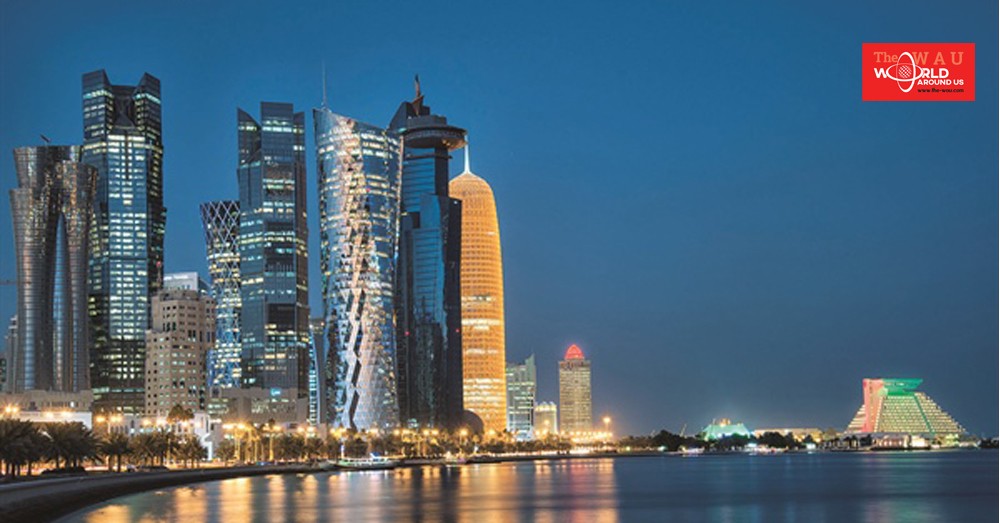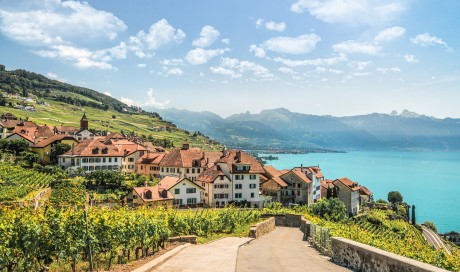Despite the unjust Saudi-led blockade continuing for two years now, Qatar has emerged as one of the best performing economies in the region.
Given its vast net foreign assets, undisrupted hydrocarbon exports and expanding gas output, Qatar’s economy has weathered the crisis reasonably well.
Defying two years of the blockade, Qatar is pushing through with its plans to solidify its top spot as the world’s largest liquefied natural gas (LNG) player both in terms of liquefaction capacity and exports.
Qatar, which has the current LNG production capacity of 77 million tonnes per annum (mtpa), surprised energy markets when it announced that it would ramp up production to a staggering 110 mtpa by further developing its prolific North Field within six years. Going forward, Qatar does not only continue to build more LNG infrastructure but also invest in other LNG projects in a number of countries, including the US and Russia.
Amidst blockade, Qatar pulled out of OPEC in January to focus on its gas sector. Moreover, in 2018, it reached a trade surplus of $52 billion in spite of air, sea and road routes blockade imposed by its neighbours.
In a clear demonstration of investors’ faith in Qatar’s solid economy, Qatar raised $12 billion in 2018, its first dollar bond sale in two years.
“Economic performance improved in 2018. Qatar’s economy has successfully absorbed the shocks from the 2014-16 drop in hydrocarbon prices and the 2017 diplomatic rift,” the IMF said in a statement released just two days before the second anniversary of the Saudi-led embargo.
“Qatar’s real GDP growth is estimated at 2.2 percent, up from 1.6 percent in 2017,” it said.
This expansion is set to gather momentum again in 2019, with GDP expected to rise by 3.1 percent on the back of both increased hydrocarbon and non-hydrocarbon activity, before stabilising to around 2.7 percent per annum between 2020 and 2023 underpinned by still significant public infrastructure spending, expansion of liquefied natural gas production, and the hosting of FIFA 2022 World cup.
The reason for Qatar’s position of strength is the wise and far-sighted leadership of the country. Qatar has an ambitious and long-term development plan under the Qatar National Vision 2030 to diversify its economy, with infrastructure spending related to transport, education, sports, healthcare, telecommunication and hospitality being a key part of this plan.
Healthy economic growth in times of weaker oil prices shows that the strategy of economic diversification is already proving successful.
Strong gains by the non-oil and gas sector underpinned solid growth in Qatar’s economy in 2018, laying the foundations for further expansion as the country steps up efforts to diversify its economy.
Qatar is also defying the Saudi-led boycott in other ways. In March, Qatar said it would start an energy-focused lender ‘Energy Bank’ worth $10 billion.
The move comes in the context of a fast-growing energy sector in Qatar, which plans to expand the capacity of annual production of liquefied natural gas.
Aiming to be the largest Islamic energy-focused lender in the world which will target the private sector and government’s energy projects home and abroad, the bank would focus on financing oil, gas, petrochemicals, and renewable energy projects.
Qatar’s fiscal and external positions are strengthening, and the country’s central bank’s foreign exchange reserves have increased.
Monetary and financial conditions have improved significantly, with banks attracting non-resident flows and being able to reduce reliance on financial support from the fiscal and monetary authorities.
The Qatar Central Bank (QCB) also reported that foreign currency reserves had rebounded from the outflow that followed the imposition of the regional blockade in mid-2017. The QCB’s foreign exchange reserves rose to all time high above $49bn in 2018 and are expected to increase further.
Any assessment of Qatar’s economic strength during the siege will be incomplete if it does not include the role of Qatar Investment Authority (QIA), the country’s sovereign wealth fund that invests surpluses of oil and gas revenues to diversify revenues and minimise risk from reliance on energy prices.
With assets now estimated to be around $330 billion, the QIA is helping to guarantee Qatar’s future economic sustainability by not only providing alternative sources of income but the huge amount of foreign assets held have been successful in protecting Qatar’s strong sovereign credit rating.
According to the IMF report, substantial buffers and prudent policies would help Doha manage economic supremacy even it the blockade is prolonged.
Share This Post















